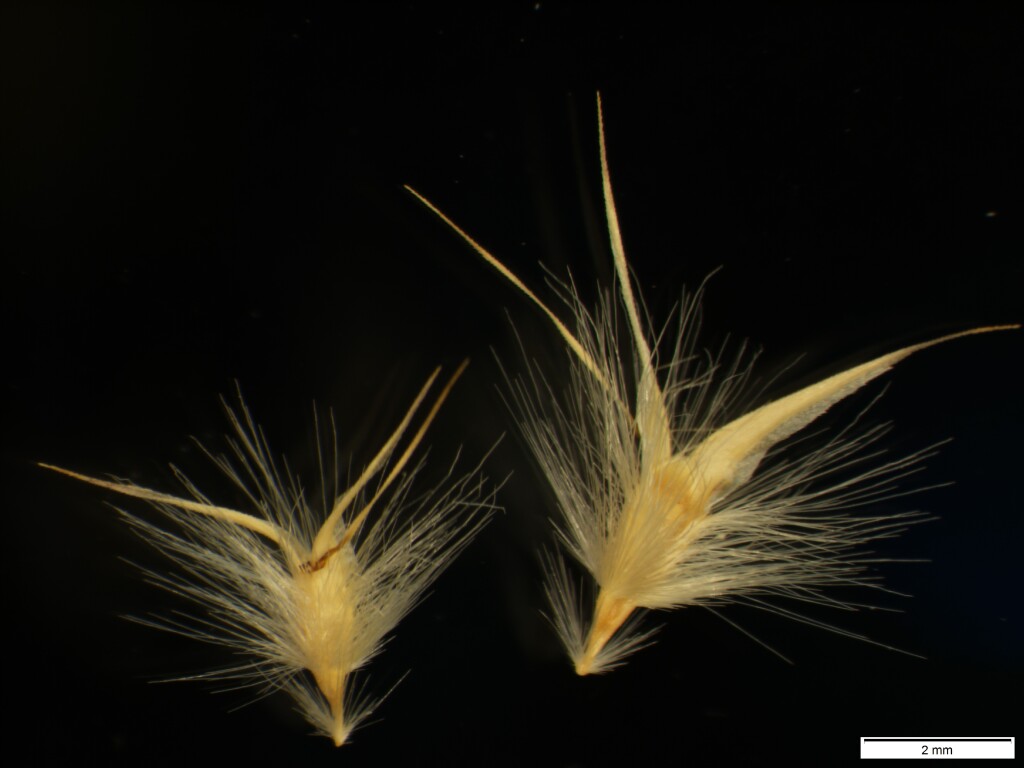Rytidosperma geniculatum
(J.M.Black) Connor & Edgar Kneed Wallaby-grassSlender, tufted perennial. Culms fine to 20–40(–60) cm high. Leaves pilose (often sparsely); blade fine, inrolled, to 25 cm long, less than 1 mm wide. Panicle ovate, compact, 1–5 cm long. Spikelets purplish when young, mostly 3–5-flowered; glumes subequal, ovate to broad-lanceolate, 5–9 mm long; lemma 3–4 mm long, more or less evenly covered with hairs of equal length commencing 1–1.5 mm above the sparse callus tuft; lateral lobes divergent, 4–6 mm long, evenly tapered, lacking, or with very short, setiform tips; central awn scarcely exceeding lateral lobes, shortly twisted at base; palea obovate, not or scarcely exceeding sinus. Flowers mainly Oct.–Dec.
LoM, MuM, Wim, GleP, Brid, VVP, VRiv, MuF, GipP, OtP, WaP, Gold, CVU, GGr, DunT, NIS, EGL, EGU, WPro, HSF, HNF, OtR, Strz, VAlp. Also SA, Tas. Widespread in dryish forests, woodlands and grasslands, but absent from the further north-west, mountains and deser forests, particularly common on sandy or shallow soils, occasionally occurring amongst rocks in elevated sites, e.g. Grampians and You Yangs. Sometimes persists in suburban lawns.
Walsh, N.G. (1994). Poaceae. In: Walsh, N.G.; Entwisle, T.J., Flora of Victoria Vol. 2, Ferns and Allied Plants, Conifers and Monocotyledons, pp. 356–627. Inkata Press, Melbourne.
 Spinning
Spinning
